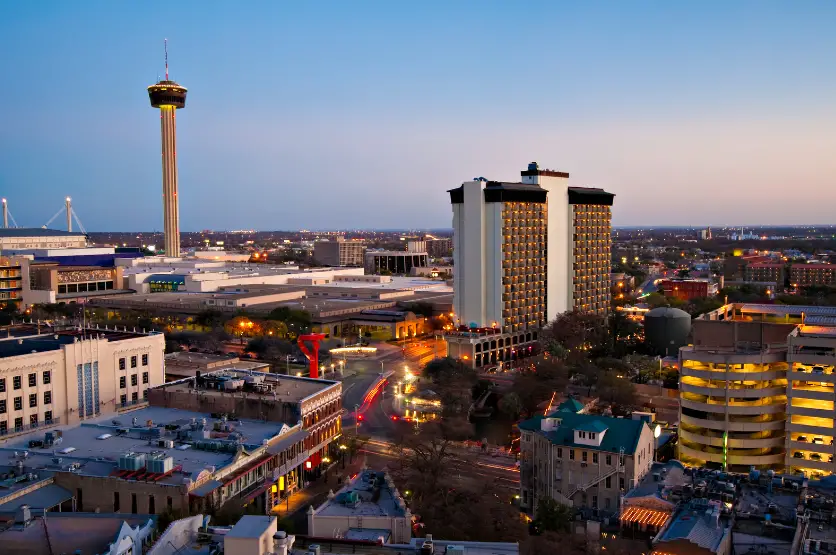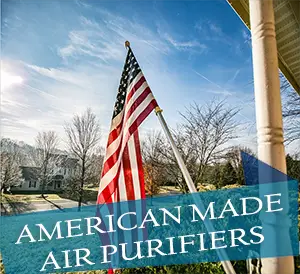
As we breathe in the air around us, how often do we stop to consider its quality? San Antonio’s air quality is a topic shrouded in obscurity, yet it holds enormous significance for our health, environment, and overall quality of life. Today, we’re embarking on an enlightening journey, exploring the air quality of this vibrant city, and discovering the hidden secrets it holds.
The Current State of Air Quality in San Antonio
- San Antonio’s air quality is a dynamic aspect, showing marked variations throughout the year.
- The hot, dry summer months are notorious for increased levels of air pollution.
- Factors like industrial emissions, vehicle exhaust, and occasional wildfires significantly impact the quality of the air we breathe.
To put things into perspective, let’s delve into the annual air quality statistics in San Antonio:
| Month | Average AQI | Good Air Quality Days | Unhealthy Air Quality Days |
|---|---|---|---|
| January | 38 | 27 | 4 |
| February | 40 | 25 | 3 |
| March | 45 | 23 | 8 |
| April | 48 | 21 | 9 |
| May | 50 | 20 | 11 |
| June | 55 | 18 | 12 |
| July | 60 | 15 | 16 |
| August | 58 | 17 | 14 |
| September | 52 | 20 | 10 |
| October | 46 | 22 | 9 |
| November | 42 | 25 | 5 |
| December | 35 | 27 | 4 |
Delving Deeper: The Impact of Seasons on San Antonio’s Air Quality
Like many cities around the world, San Antonio’s air quality shows stark changes with the changing seasons. The winter months tend to have relatively better air quality, while the summer heat combined with pollution creates a haze of poor air quality. This seasonal variation is an essential factor to consider when discussing the air quality of San Antonio, and it significantly impacts the lives of its inhabitants.
The Effects of Poor Air Quality: An Unseen Hazard
Amid the hustle and bustle of San Antonio’s thriving city life, the air quality often takes a backseat in our minds. Yet, the impact of poor air quality can be severe and far-reaching. From our respiratory system to our cardiovascular health, and even our mental well-being, the quality of the air we breathe impacts every aspect of our lives. Furthermore, it’s not just humans who suffer; poor air quality has detrimental effects on the environment and wildlife, contributing to climate change and loss of biodiversity.
The Solution: Air Purifiers
Fortunately, the situation isn’t hopeless. As an air purifier expert, I can vouch for the effectiveness of air purifiers in significantly improving indoor air quality. Here are my top three Amazon picks for air purifiers that can dramatically enhance the air quality in your San Antonio home:

- LEVOIT Air Purifier: This powerhouse offers an advanced 3-stage filtration system, effectively removing pollutants and allergens. It’s an ideal choice for those dealing with allergies or asthma.

- Coway AP-1512HH Mighty Air Purifier: Don’t be fooled by its compact size. This air purifier is a beast when it comes to delivering fresh, clean air. Its 4-stage filtration system makes it a worthy addition to any small or medium-sized space.

- Blueair Blue Pure 211+ Air Purifier: This purifier stands out with its large room coverage and advanced filter, making it an excellent choice for anyone looking to make a significant improvement in their indoor air quality.
The Detailed Breakdown: Pros and Cons of San Antonio’s Air
San Antonio’s air quality has its share of positives and negatives. On the bright side, during the cooler months, the city often enjoys good to moderate air quality, providing a comfortable environment for its inhabitants. Nature-lovers can rejoice during these months, enjoying outdoor activities with fewer concerns about air pollution.
Conversely, during the summer months, air quality tends to deteriorate, and those with respiratory conditions may find it increasingly challenging to breathe, indicating the need for air purifiers. Outdoor activities might need to be curtailed, and residents are advised to stay informed about the daily air quality index.
FAQ
- What is in the air in San Antonio Texas today? The air in San Antonio consists of a mix of natural and manmade pollutants, including dust, pollen, vehicle emissions, and industrial pollution. The exact composition can vary daily and is influenced by factors like weather conditions, time of the year, and human activities.
- What is the air quality forecast for San Antonio? The air quality forecast can fluctuate based on various factors, including weather conditions, industrial activity, and vehicular traffic. Authorities regularly monitor and provide updates on the air quality index.
- What’s the air in San Antonio Texas? The air in San Antonio varies in quality throughout the year, with the summer months usually seeing a decrease in air quality due to heat and pollution. The quality of air also varies across different parts of the city, with urban areas typically experiencing poorer air quality than rural or suburban areas.
- What areas of Texas have the best air quality? The air quality varies across Texas. Generally, rural and coastal areas enjoy better air quality due to lesser industrial activity and more abundant natural environments. However, it’s crucial to check the local air quality index for the most accurate information.
The Final Verdict
As we navigate through the complex landscape of air quality in San Antonio, it becomes increasingly clear that this silent issue requires our undivided attention. From understanding its seasonal fluctuations to recognizing its impacts on our health and environment, the significance of air quality cannot be overstated.
Recall a previous article on Bakersfield’s air quality, where we discussed the region’s strategies to cope with similar issues. Just like Bakersfield, San Antonio’s air quality presents a complex challenge that calls for a multifaceted solution. By investing in a quality air purifier, like the ones recommended above, you can take a proactive step towards cleaner, healthier air.
In conclusion, San Antonio’s air quality is a compelling topic that warrants our attention and understanding. By acknowledging its impacts and taking proactive measures, we can breathe easier, secure in the knowledge that we are doing our part in safeguarding our health and the environment for future generations.


